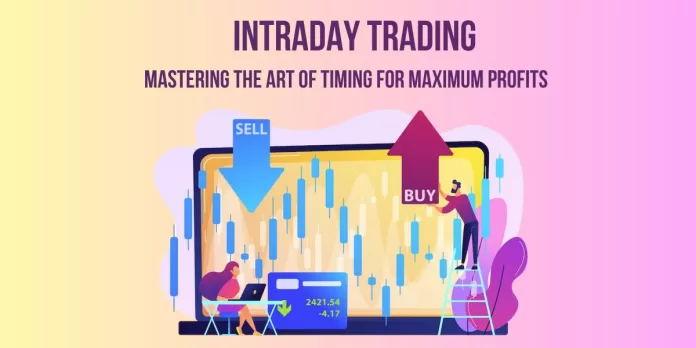Imagine a starry Friday evening, charged with the excitement of a pulsating T20 cricket match. A dear friend paid an unexpected visit. We chose to savour the game first, accompanied by a heaping bucket of popcorn, before diving into the intricacies of trading. As the first ball was bowled, my friend, usually glued to the screen like a magnet, held my attention.
Much to my amazement, after the initial six overs of the match, he leapt from his seat with unbridled enthusiasm, declaring, “Let’s delve into intraday trading!” I couldn’t help but inquire, “Aren’t you keen on watching the rest of the match?” To which he retorted, “The first six overs and the final five overs are where the real thrill resides. The middle overs are all about tuk-tuk, mere singles and doubles. That doesn’t captivate me!”
Unbeknownst to him, he had stumbled upon a profound insight—one that holds the key to success in intraday trading. He had, unwittingly, cracked the code!
Now, you may be wondering how a cricket match and the world of intraday trading are intertwined. Conventionally, intraday trading has been synonymous with an entire day chained to your trading screen until the closing bell tolls. However, here’s the revelation: staying glued to your screen doesn’t guarantee profits. In fact, it often triggers emotional decisions and excessive trading. The real secret lies in active engagement at precisely the right moments—the essence of what we traders refer to as “timing the patterns.”
So, what exactly is this enigmatic “timing of the patterns”? Much like a seasoned cricketer anticipates pivotal moments in a match, there exist specific timeframes within the stock market where significant action unfolds. During these high-probability periods, stocks that previously idled spring to life, embarking on either trend-following or trend-reversal journeys. Any discernible breakout or reversal pattern emerging during these temporal windows is akin to discovering gold in the trading world—an opportunity not to be missed.
In the context of the Indian equity market, let’s dissect the trading day into its constituent time zones:
9 AM to 9.15 AM: The pre-open phase—an ideal window to assess the market’s reaction to overnight and domestic influences while identifying stocks experiencing substantial gap-up or gap-down openings.
9.15 AM to 11.15 AM: The initial couple of hours—where many stocks unleash emphatic directional moves, influenced by the preceding trading session or overnight developments. It’s a time of fervent activity that demands unwavering concentration.
11.15 AM to 1.15 PM: A somewhat tranquil period—though not devoid of significant market movements. During this phase, stock prices may meander as they absorb incoming news.
1.15 PM to 3.30 PM: The climactic stretch of the trading day. Here, traders often decide whether to carry positions overnight, guided by market sentiment. It requires unswerving focus, but one must be vigilant against burnout.
This sage counsel serves as your compass amid the tumultuous sea of intraday trading, guiding you to pinpoint precisely when to seize the opportunities that abound.
Remember, in this intricate realm, simplicity reigns supreme, and the mastery of timing is the true hallmark of a successful trader.
Also Read: Trendline Trading – Top Secrets You Should Know
With these insights, may your journey through the thrilling arena of intraday trading be as rewarding as a triumphant match on the cricket field.
Let the intraday game commence!


